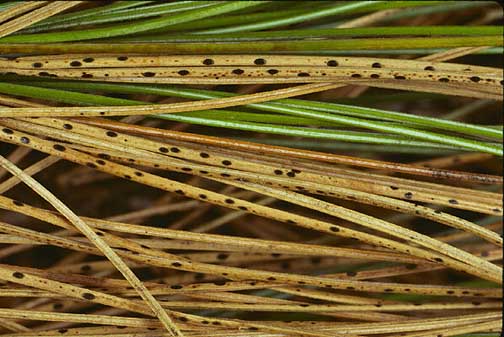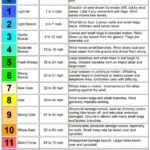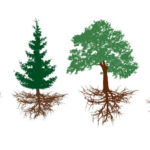Battling Brown Spot Needle Blight: Understanding and Combating a Common Fungal Disease
If you’ve noticed unsightly brown spots on the needles of your beloved evergreen trees, chances are you’re dealing with Brown Spot Needle Blight. This common fungal disease can be a cause for concern among tree enthusiasts. Fear not! In this easy-to-read blog post, we’ll delve into the world of Brown Spot Needle Blight, exploring its causes, symptoms, and effective strategies to combat this pesky fungal foe.
What is Brown Spot Needle Blight?
Brown Spot Needle Blight, scientifically known as Mycosphaerella dearnessii, is a fungal disease that primarily affects certain evergreen trees, including pines, spruces, and firs. It typically manifests as brown or purplish spots on the needles, often accompanied by yellowing or browning of affected foliage.
Causes and Spreading
The fungus responsible for Brown Spot Needle Blight thrives in warm and humid conditions. It spreads through spores that can be transported by wind, rain, or contaminated pruning tools. The disease is more likely to occur in crowded tree plantings, where poor air circulation and high humidity create an ideal environment for fungal growth.
Identifying Symptoms
To confirm the presence of Brown Spot Needle Blight, closely examine the needles of your evergreen trees. Look for small, circular spots that gradually enlarge and turn brown or purple. The affected needles may eventually drop prematurely, leading to thinning foliage and an overall decline in the tree’s appearance.
Prevention and Management
Prevention is key when it comes to Brown Spot Needle Blight. Here are some practical measures you can take to protect your trees:
Prune Properly: When pruning, ensure you use sanitized tools to avoid spreading the fungus. Remove and dispose of any infected needles or branches promptly.
Promote Good Air Circulation: Trim or thin out branches to enhance air movement within the tree canopy, reducing the chances of prolonged leaf wetness.
Water Wisely: Avoid overhead watering, as wet foliage can create an ideal environment for fungal growth. Instead, opt for drip irrigation or watering at the base of the tree.
Maintain Tree Health: Keep your evergreen trees healthy through regular fertilization, proper watering practices, and addressing any signs of stress promptly.
Consider Resistant Varieties: If you’re planning to add new evergreen trees to your landscape, choose varieties that are known to be resistant to Brown Spot Needle Blight.
Fungicidal Treatments:
If preventive measures aren’t sufficient, and the disease persists or spreads, you may need to consider fungicidal treatments. Consult with a professional arborist or horticulturist for appropriate fungicide recommendations, application timing, and usage instructions. Remember to follow the label instructions carefully to ensure safe and effective treatment.
Brown Spot Needle Blight may pose a challenge to the health and beauty of your evergreen trees, but armed with knowledge and proactive measures, you can effectively manage and minimize its impact. By practicing preventive strategies, promoting good tree health, and seeking professional guidance when necessary, you can keep your trees looking vibrant and resilient. Don’t let Brown Spot Needle Blight dampen your love for evergreens—take action and restore their beauty!




